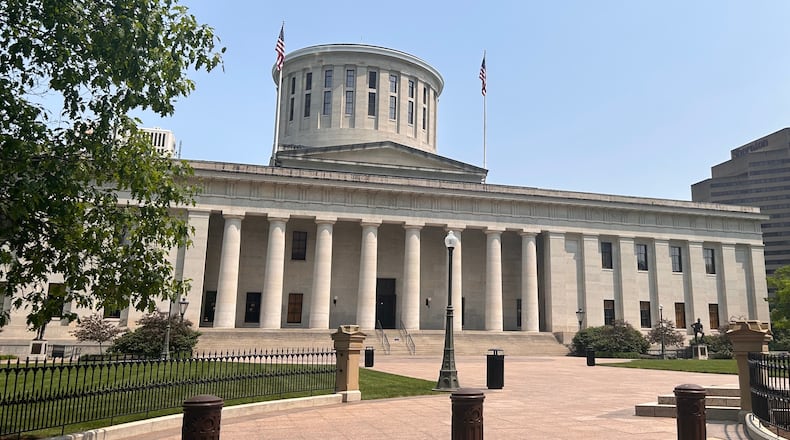While the bill is in its early stages and is subject to plenty of changes, its central premise was lauded as “very important” by House Speaker Matt Huffman, R-Lima, on Wednesday.
“We have 6,500 local taxing jurisdictions, and this may be a small step, but if you have to try to cut down a tree, you gotta take a couple of whacks at it at the beginning to get it going,” Huffman told this outlet. “So, I think it’s a great idea.”
As proposed, H.B. 574 would set aside $25 million to fund a two-year pilot program, which would award grants to villages, townships and cities — but not counties — that decide on their own accord to merge or consolidate with at least one other neighboring municipality.
The proposal also reads: “A political subdivision other than a township or municipal corporation,“ like a health district, conservancy district or library district, ”is eligible to receive a grant if one or more other political subdivisions of a similar nature merge under applicable Revised Code provisions."
There may additional legal hurdles for some political subdivisions to merge, the bill notes.
The financial payoff of grants for merging villages, townships and cities would be calculated by the following proposed formula: Multiplying the merged population of the municipality by a factor of 40 and then adding a sum equal to 20% of the lower-spending municipality’s most recent budget. Grants would be capped at $2 million.
There’s a similar formula for the other political subdivision like libraries, except it would multiply the new population by a factor of 20 instead of 40, and add a sum equal to 10% of the lower subdivision’s budget rather than 20%. Those grants would be capped at $1 million.
In an interview with this news outlet, the two lawmakers behind the bill stressed that their proposal is exactly that: a proposal. They expect and encourage it to be modified throughout its time in the Ohio General Assembly, and they hope the committee process sparks a healthy debate on the prospect of encouraging, rather than forcing, local consolidation.
“It’s really a framework that we introduced,” Dovilla said, “but I think neither of us wanted to let the perfect be the enemy of the good, in terms of the introduced version.”
Daniels said the central goal is to cut down on local redundancies.
“Really, it’s to increase efficiency amongst the local governments in the state of Ohio. It’s my opinion, and I think Rep. Dovilla agrees, that we have such a large number of municipalities that it’s kind of wasteful,” Daniels said. “My goal is to give some incentives so that the local politicians can work to try to merge and make their own local governments more efficient.”
Both lawmakers framed cutting down on local redundancies as a piece, however small, of the answer to a rising property tax burden in the state.
“Our local government expenses seem to have grown at a higher rate,” Daniels said. “Therefore, our reliance on property tax, which is a local government revenue source, is outsized. We’re trying to hit the actual source of the problem instead of just throwing a band-aid on it.”
The Republican-controlled Ohio General Assembly has already taken a more punitive approach to the goal of reducing taxing jurisdictions. Dayton Daily News reporting found that at least 28 village governments in the area will be on the chopping block after 2030, subject to a vote from village residents. This is the result of a 2024-passed village audit bill, which has the potential to cull a significant portion of village governments across the state through dissolution.
While H.B. 574 has not yet had public hearings, Daniels and Dovilla said they’ve gotten a positive response so far.
Warren County Auditor Matt Nolan, who recently took part in the governor’s task force to reduce property tax burdens in Ohio, told this outlet that he approved of H.B. 574’s approach.
“It’s a great start,” Nolan said. “We have only used sticks to threaten local governments. I like the idea of using more carrots.”
The Ohio Municipal League, which often weighs in on state proposals that will impact villages and cities, has not yet taken a stance on H.B. 574, according to spokesperson Bevan Schneck.
For more stories like this, sign up for our Ohio Politics newsletter. It’s free, curated, and delivered straight to your inbox every Thursday evening.
Avery Kreemer can be reached at 614-981-1422, on X, via email, or you can drop him a comment/tip with the survey below.
About the Author

